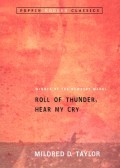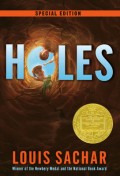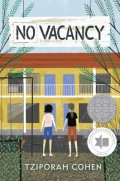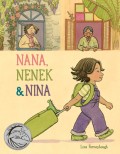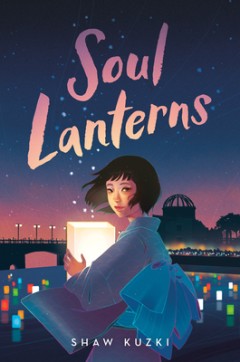
Soul Lanterns
AUTHOR
ILLUSTRATOR
SERIES
TYPE
AGE
Children's - 5th Grade+, Age 10+
READABILITY
5.7
PAGES
176 p. ;
KEYWORDS
CATEGORIES
SUBJECTS
PUBLISHER
Make Way For Books
On August 6 each year the people of Hiroshima, Japan, set paper lanterns afloat in the river as a remembrance to those killed by the bomb dropped there in 1945. Three school children, Kozo, Shun, and Nozomi are budding artists challenged by their teachers to create a display the children choose to call Hiroshima: Then and Now for their families and classmates. Over the summer they ask friends and relatives for stories about their loved ones on that day. Often the stories are difficult to tell and to hear. Some have been kept hidden for years. All are painful. The children and their friends create a variety of artistic works for a collective display. All their works embody a moment in time of a loved one lost. It is their beloved art teacher who wisely and sensitively teaches them the meaning of memorial as a bridge from the past into the future.
Publisher Summary
The haunting and poignant story of a how a young Japanese girl's understanding of the historic and tragic bombing of Hiroshima is transformed by a memorial lantern-floating ceremony. Twelve-year-old Nozomi lives in the Japanese city of Hiroshima. She wasn't even born when the bombing of Hiroshima took place. Every year Nozomi joins her family at the lantern-floating ceremony to honor those lost in the bombing. People write the names of their deceased loved ones along with messages of peace, on paper lanterns and set them afloat on the river. This year Nozomi realizes that her mother always releases one lantern with no name. She begins to ask questions, and when complicated stories of loss and loneliness unfold, Nozomi and her friends come up with a creative way to share their loved ones' experiences. By opening people's eyes to the struggles they all keep hidden, the project teaches the entire community new ways to show compassion.
Soul Lanterns is an honest exploration of what happened on August 6, 1945, and offers readers a glimpse not only into the rich cultural history of Japan but also into the intimate lives of those who recognize--better than most--the urgent need for peace.










